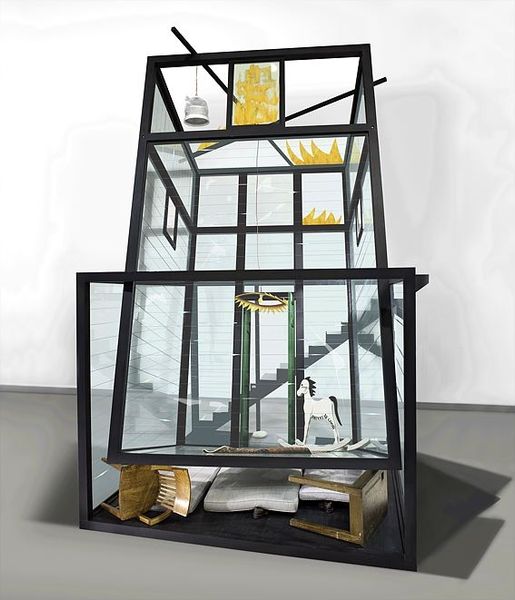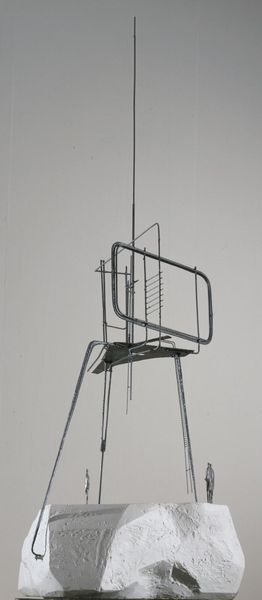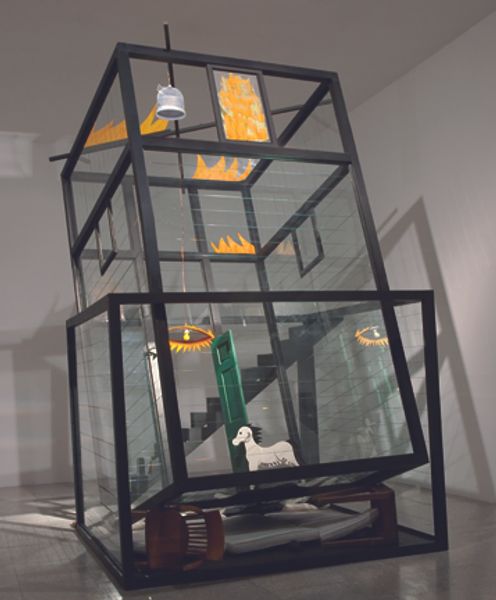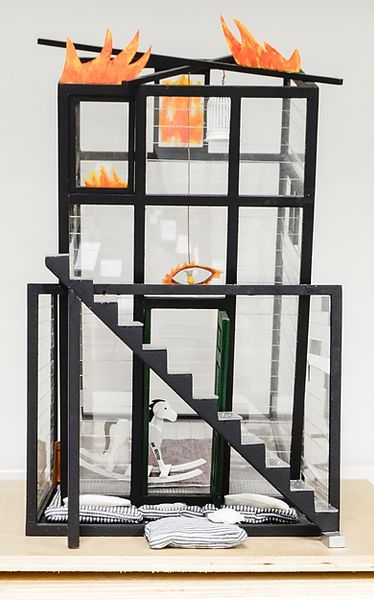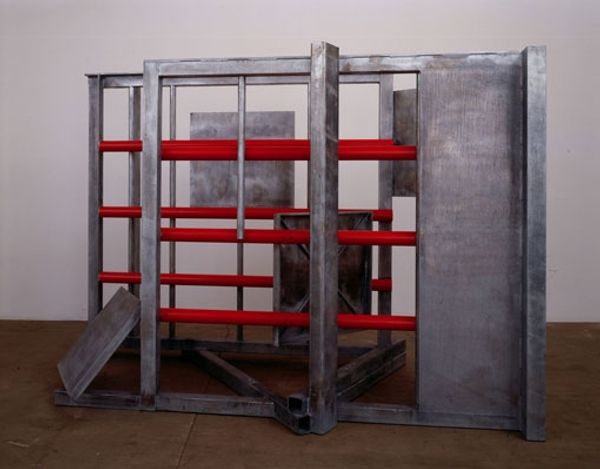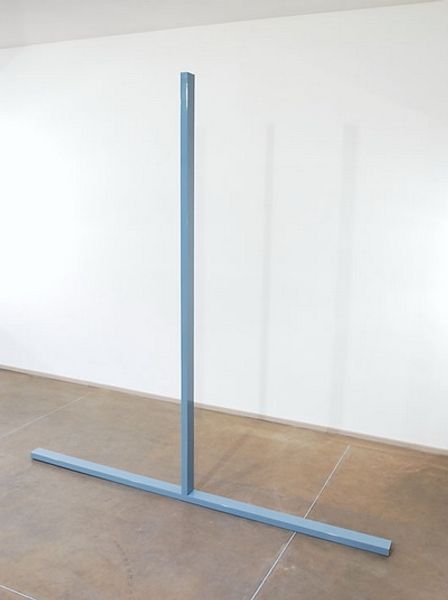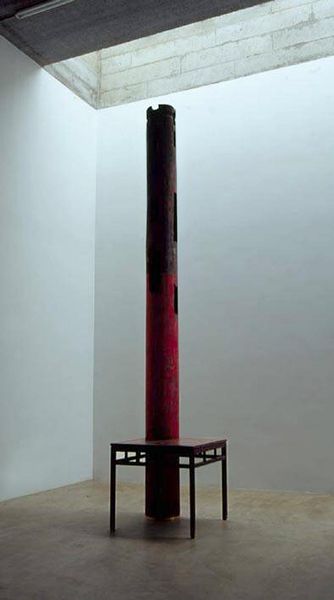
Copyright: Siah Armajani,Fair Use
Editor: This is Siah Armajani’s "Fallujah," created in 2005 using mixed media. It feels incredibly unsettling. There's a distorted, almost collapsing architectural framework surrounding these mundane, childlike objects. What do you see in this piece, especially considering the title? Curator: The title immediately situates the work within the socio-political context of the Iraq War. Armajani, through this distorted architecture and displaced domestic items, critiques the violence inflicted upon Fallujah and its inhabitants. The formal distortion speaks to a collapsing structure - is it a collapsing society? What are the emotional implications? Editor: It's like childhood innocence being contained and fractured, the rocking horse becomes a symbol of vulnerability within a war zone. Curator: Exactly. Armajani is using this domestic setting, a universal symbol of safety and nurture, to highlight the profound impact of political violence on personal lives. Think about the geometrical forms, the clear, almost clinical display cases: Are these metaphors for a detached, objectified view of human suffering? Editor: So, the modernist style and geometric forms aren't just aesthetic choices, but deliberate attempts to comment on the dehumanization inherent in conflict? Curator: Precisely. The 'Fallujah' sculpture allows a dialogue about accountability. It is meant to prompt us to confront uncomfortable truths about our own relationship with such geopolitical events. By situating it in relation to other work of the same time, we begin to have an expanded understanding of both aesthetic strategy and the political atmosphere of the era. Editor: I hadn't considered how actively the form itself participates in conveying the message. This has given me a whole new way of thinking about the intersection of art and politics. Curator: It goes beyond merely representing an event. It questions how we process information about global conflicts, how power structures influence narratives, and our own responsibility within those systems. The purpose is engagement, protest, and conversation all in one.
Comments
No comments
Be the first to comment and join the conversation on the ultimate creative platform.
